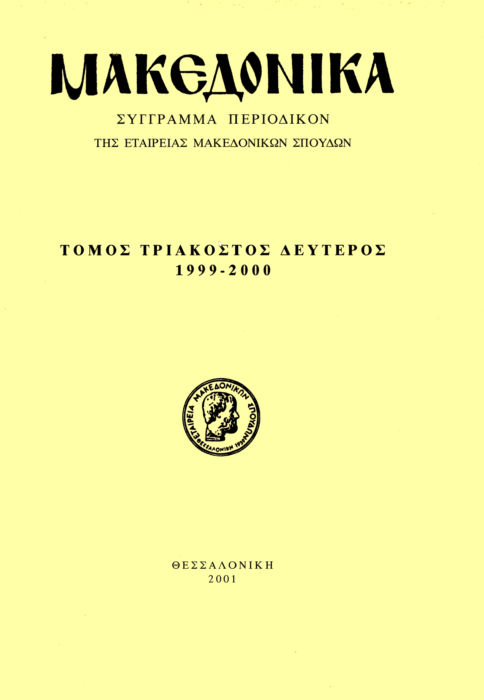Athonite presence in the northern Aegean: the monastery of St. Paul's turkish archive on Lemnos (15th-16th cent.)
Abstract
This article represents the first attempt to evaluate a Turkish monastic archive. On the basis of both the Turkish and Byzantine documents held at the metochion of St. Paul’s Monastery on Lemnos, an attempt is made to assess the socio-economic role of the dependency in the life of the island. The article is also based on a study of the published Byzantine documents of other Atho nite dependencies, the published texts of Ottoman kanunnames (regulations) and the data from the first Ottoman record for the island, for the period 1489/90. In this way an attempt has been made to verify the supplementary information supplied by two types of Ottoman sources: the cadastral records (tahrir defterleri) and the loose documents which to a large extent form part of the religious court records (kadi sicilien) since they consist mainly of court documents (hiiccet). The article confirms the recently expressed opinion that the Ottoman conquest of the island acted as a kind of ‘veneer’ on the well- structured Christian substratum, which continued to live and to function throughout the first century of the Ottoman occupation (preservation of Byzantine families, vestiges of communal life). Finally, it appears that the influence of the metochion on the social and economic life of the island was considerable.
Article Details
- How to Cite
-
Κοτζαγεώργης Φ. (2000). Athonite presence in the northern Aegean: the monastery of St. Paul’s turkish archive on Lemnos (15th-16th cent.). Makedonika, 32(1), 125–164. https://doi.org/10.12681/makedonika.168
- Issue
- Vol. 32
- Section
- Articles

This work is licensed under a Creative Commons Attribution-NonCommercial-ShareAlike 4.0 International License.
Authors who publish with this journal agree to the following terms:
- Authors retain copyright and grant the journal right of first publication with the work simultaneously licensed under a Creative Commons Attribution Non-Commercial License that allows others to share the work with an acknowledgement of the work's authorship and initial publication in this journal.
- Authors are able to enter into separate, additional contractual arrangements for the non-exclusive distribution of the journal's published version of the work (e.g. post it to an institutional repository or publish it in a book), with an acknowledgement of its initial publication in this journal.
- Authors are permitted and encouraged to post their work online (preferably in institutional repositories or on their website) prior to and during the submission process, as it can lead to productive exchanges, as well as earlier and greater citation of published work (See The Effect of Open Access).



